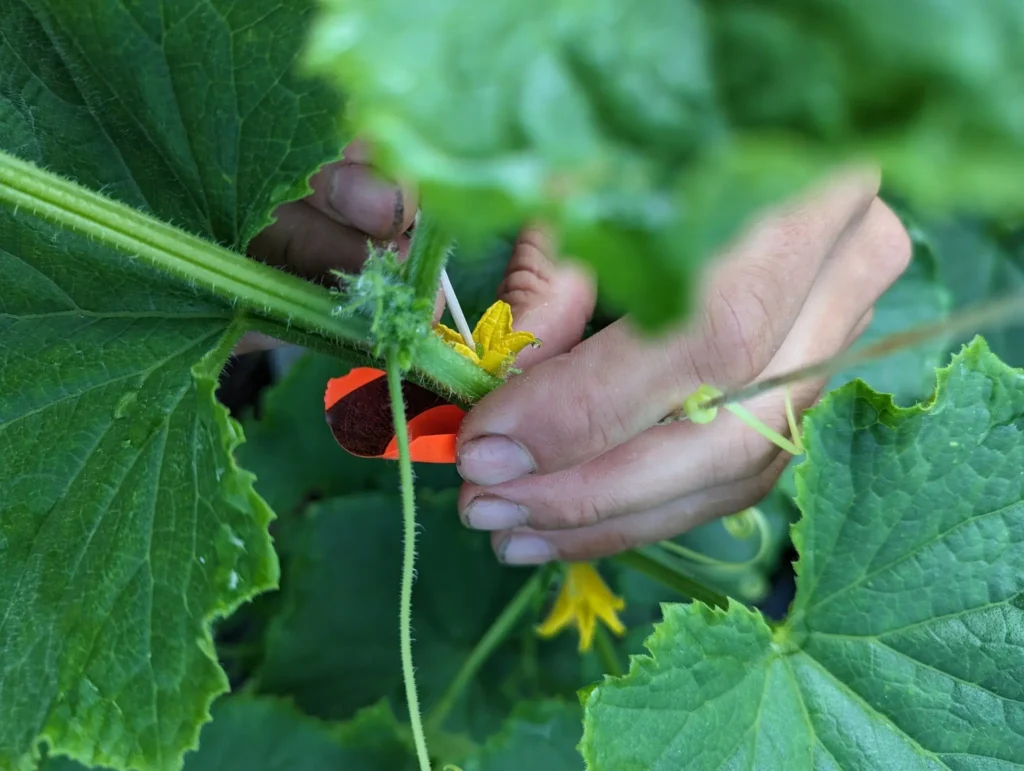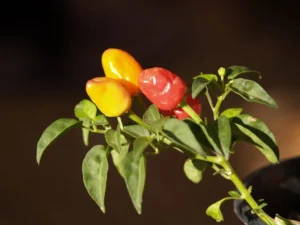Are you struggling with cucumber plants that produce plenty of flowers but no fruit? You’re not alone. Many gardeners face this frustrating issue, but there’s a simple solution: hand pollination. In this comprehensive guide, we’ll explore how to pollinate cucumbers by hand, ensuring a bountiful harvest even if natural pollinators are scarce.
Cucumbers, like many other vegetables, rely on pollination to produce fruit. While bees and other insects typically handle this task, sometimes they need a little help from us gardeners. Whether you’re growing cucumbers in pots or in the ground, mastering the art of hand pollination can significantly boost your yield.
The Basics of Cucumber Pollination
Before we dive into the how-to, let’s understand the basics of cucumber pollination:
- Male and Female Flowers: Cucumber plants produce both male and female flowers.
- Identification: Female flowers have a small, immature cucumber behind the blossom, while male flowers have a thin stem.
- Pollination Process: Pollen from the male flower needs to reach the female flower for fruit to develop.
Now, let’s get our hands dirty (or should I say, polleny?) and learn how to play cupid for our cucumber plants.

Step-by-Step Guide: How to Pollinate Cucumbers by Hand
- Identify the Flowers
- Look for open blossoms early in the morning
- Male flowers: Thin stem behind the flower
- Female flowers: Small, immature cucumber behind the flower
- Gather Your Tools
- Small, soft paintbrush or cotton swab
- Alternatively, you can use the male flower itself
- Collect Pollen
- Gently brush the center of a male flower
- The yellow pollen should stick to your brush or swab
- Transfer Pollen
- Carefully brush the pollen onto the center of a female flower
- Be gentle to avoid damaging the delicate flower parts
- Repeat
- Pollinate multiple female flowers with pollen from one male flower
- Continue the process every few days as new flowers open
- Monitor Progress
- Watch for signs of successful pollination (we’ll cover these later)
Pollinating Cucumbers in Pots
Growing cucumbers in pots? No problem! The hand pollination process remains the same, but here are some extra tips:
- Ensure adequate spacing between plants for air circulation
- Place pots in areas with good natural pollinator activity
- Consider companion planting with pollinator-friendly flowers
- Use vertical supports to maximize space and improve air flow
Pollinating Cucumbers Without Male Flowers
Sometimes, you might find yourself with only female flowers. Don’t panic! Here are some solutions:
- Wait it out: Male flowers often appear before females, so be patient
- Borrow pollen: If you have multiple cucumber plants, use pollen from another plant
- Plant variety: Some cucumber varieties are parthenocarpic, meaning they don’t require pollination

Troubleshooting Common Pollination Issues
Even with your best efforts, you might encounter some challenges. Here’s how to tackle them:
- No female flowers:
- Ensure proper nutrition (especially phosphorus and potassium)
- Check for proper sunlight exposure
- Maintain consistent watering
- Flowers falling off before pollination:
- This is often due to stress (heat, drought, or pests)
- Improve growing conditions and monitor for pests
- Misshapen fruits:
- Often a sign of incomplete pollination
- Try pollinating multiple times per flower
The Science Behind Cucumber Pollination
Let’s get a bit nerdy for a moment and explore the fascinating world of cucumber reproduction:
- Monoecious plants: Cucumbers have separate male and female flowers on the same plant
- Pollen viability: Cucumber pollen remains viable for only about one day
- Timing is crucial: Flowers are typically receptive to pollination for just a few hours in the morning
This knowledge can help you time your hand pollination efforts for maximum success.
Enhancing Natural Pollination
While hand pollination is effective, encouraging natural pollinators is ideal. Here’s how:
- Plant pollinator-friendly flowers nearby (e.g., marigolds, zinnias, or sunflowers)
- Avoid using pesticides, especially during flowering
- Provide water sources for bees (shallow dishes with pebbles work well)
- Consider installing a bee hotel for solitary bees
Maximizing Your Cucumber Harvest
Now that you’re a pollination pro, let’s talk about maximizing your harvest:
- Regular harvesting encourages continued production
- Pick cucumbers when they’re young and tender for best flavor
- Remove any overripe or diseased fruits promptly
- Maintain consistent watering and fertilization throughout the growing season
Cucumber Varieties and Pollination Requirements
Not all cucumbers are created equal when it comes to pollination needs:
- Standard varieties: Require pollination for fruit development
- Gynoecious varieties: Produce mostly female flowers, often paired with a pollinator plant
- Parthenocarpic varieties: Can produce fruit without pollination (great for greenhouse growing)
Consider experimenting with different varieties to find what works best in your garden.
Frequently Asked Questions
Q: Can you manually pollinate cucumbers?
A: Absolutely! Hand pollination is an effective way to ensure fruit set, especially when natural pollinators are scarce.
Q: Do cucumbers need 2 plants to pollinate?
A: Not necessarily. Most cucumber plants produce both male and female flowers, allowing for self-pollination. However, having multiple plants can increase pollination chances.
Q: How to know if a cucumber is pollinated?
A: Successfully pollinated female flowers will start developing into small cucumbers within a few days. Unpollinated flowers will yellow and fall off.
Q: What time of day do you hand pollinate cucumbers?
A: Early morning is best, when flowers are freshly opened and pollen is most viable. Aim for before 10 AM for optimal results.
Cucumber Pollination Myths Debunked
Let’s clear up some common misconceptions:
- Myth: All cucumber flowers turn into cucumbers Truth: Only pollinated female flowers develop into fruit
- Myth: You need bees for cucumber pollination Truth: While bees are helpful, hand pollination can be just as effective
- Myth: Pollination guarantees perfect cucumbers Truth: Other factors like water, nutrients, and pest control also affect fruit quality
The History and Cultural Significance of Cucumbers
As we wrap up our pollination masterclass, let’s take a moment to appreciate the humble cucumber:
- Ancient origins: Cucumbers have been cultivated for over 3,000 years
- Global impact: They’re grown on every continent except Antarctica
- Cultural uses: Beyond food, cucumbers have been used in beauty treatments and folk medicine
By mastering hand pollination, you’re participating in a long tradition of cucumber cultivation that spans millennia and cultures.
Conclusion
Congratulations! You’re now equipped with the knowledge and skills to become a cucumber pollination expert. Remember, patience and practice are key. Don’t be discouraged if your first attempts aren’t perfect – even expert gardeners face pollination challenges.
As you venture into the world of hand pollination, you’ll develop a deeper connection with your garden and a greater appreciation for the intricate processes that bring food to our tables. So go forth, play cupid for your cucumbers, and enjoy the fruits (or should we say, vegetables?) of your labor!


